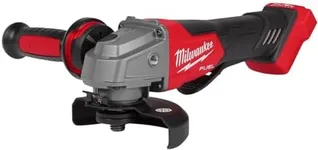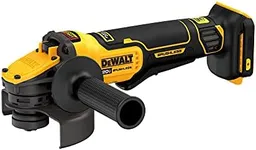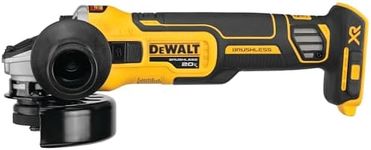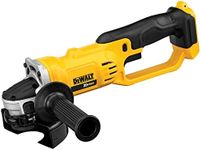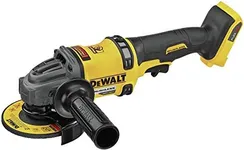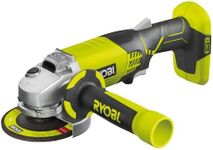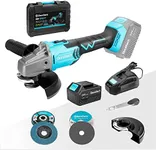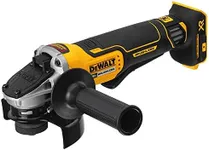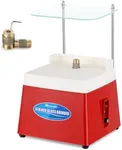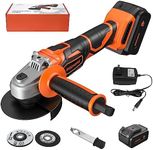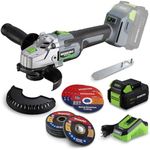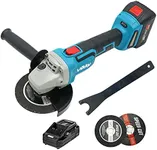Buying Guide for the Best Cordless Grinder
Choosing the right cordless grinder can make a significant difference in your projects, whether you're a professional or a DIY enthusiast. Cordless grinders offer the convenience of mobility without the hassle of cords, making them ideal for various tasks such as cutting, grinding, and polishing. To find the best fit for your needs, it's essential to understand the key specifications and how they impact performance and usability.Battery VoltageBattery voltage determines the power output of the cordless grinder. Higher voltage batteries (18V or 20V) provide more power and are suitable for heavy-duty tasks, while lower voltage batteries (12V) are lighter and more suitable for light to medium tasks. Choose a higher voltage if you need more power for tougher materials, and a lower voltage if you prioritize portability and lighter tasks.
Battery Capacity (Ah)Battery capacity, measured in ampere-hours (Ah), indicates how long the battery will last on a single charge. Higher capacity batteries (4Ah or more) will run longer, making them ideal for extended use, while lower capacity batteries (2Ah or less) are lighter and may be sufficient for shorter tasks. Consider your typical usage duration to decide on the right battery capacity.
Disc SizeThe disc size of a cordless grinder affects its cutting depth and surface area coverage. Common sizes are 4.5 inches, 5 inches, and 7 inches. Smaller discs (4.5 inches) are more maneuverable and suitable for precision work, while larger discs (7 inches) can handle more extensive cutting and grinding tasks. Choose a disc size based on the type of work you plan to do most frequently.
No-Load Speed (RPM)No-load speed, measured in revolutions per minute (RPM), indicates how fast the grinder spins without any load. Higher RPMs (8,000-10,000) are better for cutting and grinding harder materials, while lower RPMs (5,000-7,000) are suitable for polishing and working with softer materials. Match the RPM to the materials and tasks you will be handling.
WeightThe weight of a cordless grinder affects its ease of use and portability. Lighter grinders (under 5 pounds) are easier to handle and reduce user fatigue, making them ideal for prolonged use or overhead work. Heavier grinders (over 5 pounds) may offer more stability and power but can be tiring to use for extended periods. Consider your strength and the nature of your tasks when choosing the weight.
Safety FeaturesSafety features such as a paddle switch, adjustable guard, and anti-kickback technology are crucial for preventing accidents and ensuring safe operation. A paddle switch provides better control, an adjustable guard protects you from debris, and anti-kickback technology prevents the tool from jerking. Prioritize safety features based on your experience level and the potential risks of your tasks.
ErgonomicsErgonomics refers to the design and comfort of the cordless grinder. Features like a comfortable grip, vibration reduction, and balanced weight distribution can significantly enhance user comfort and reduce fatigue. Look for a grinder that feels comfortable in your hand and has features that minimize strain, especially if you plan to use it for extended periods.
Brand and WarrantyThe brand and warranty of a cordless grinder can indicate its reliability and the manufacturer's confidence in their product. Reputable brands often offer better build quality and customer support. A good warranty (at least 2-3 years) provides peace of mind and protection against defects. Consider the brand's reputation and the warranty terms when making your decision.
